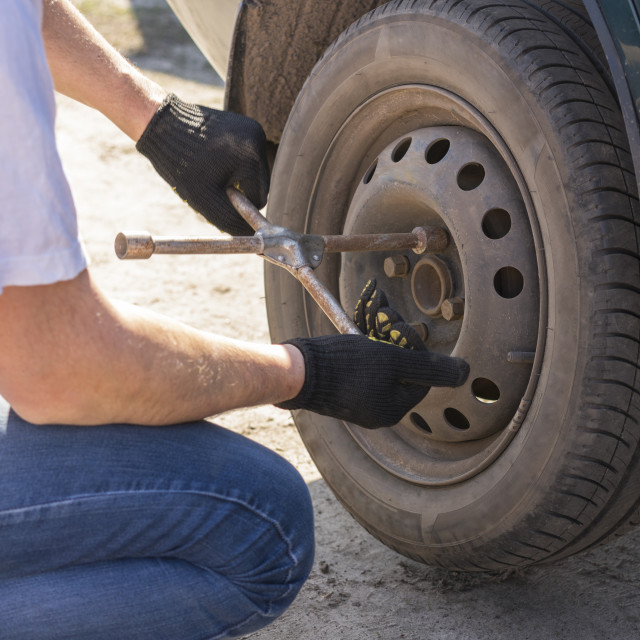When mounting your wheels you may have come across the term: Torque.
But how does torque work and what exactly is it?
Let’s find out!
Car wheel torque is the tightness of the lugnuts. This tightness is measured in an amount called foot-pounds. The foot-pounds are related to the amount of weight required to move an object a certain distance.
Depending on your car’s lugnut tightness, it can be set as high as 90 pounds or lower than 30 pounds.
Table of Contents
Check Also: Do electric cars have more torque than gas-driven cars?
Even wheel lug nut distribution helps the tires to stay balanced and even.
It helps ensure every part of the tire is holding up equal amounts of stress.
If you do not follow a specific pattern or technique for tightening your lug nuts, it can lead to wear on certain parts of the tire and uneven stress distribution.
There are several factors that you need to consider when using a torque wrench.
For example, you need to make sure that the wrench is properly calibrated, as this will affect the accuracy of the measurements.
A professional recalibration is necessary if the calibration is not accurate.
It is also important to check the condition of your lug nuts and other hardware before applying any torque, as they may be damaged or worn out and could require replacement.
Additionally, it is essential to use the correct amount of force when tightening your wheel lugs to prevent over-tightening or under-tightening them.
Finally, it is important to stay aware of any changes in conditions such as ambient temperature or humidity levels, which can impact how much force is required for proper torque settings.
The vehicle manual outlines what the torque of car wheel nuts should be.
However, as a rule of thumb, most car wheel nuts should be torqued to between 80 and 110 foot pounds.
Lug nuts are torqued according to a measurement called foot-pounds. The torque you use depends on the size of the lug nuts.
Lugnuts that are 7/16 inches should be torqued 70 to 80 foot-lbs.
1/2 inch 75 to 85 torque pounds, and 9/16 inch 135 to 145 torque pounds.
A torque wrench or torque stick helps you to get the ideal torque.
It is important not to overtighten the wheel nuts, as this can damage the wheel or the threads on the nuts.
Under tightening the wheel nuts can also be dangerous, as it can cause the wheels to come loose while driving.
When tightening the lugs, be sure they are free from oil or grease.
The best way to ensure that you have the correct torque for your car’s wheels is to consult the owner’s manual.
Each car model has different specifications, and it is important to adhere to these in order to maintain optimal performance and safety.
If you are unsure about how to properly use a torque wrench or other tools, it is best to bring your vehicle to a professional mechanic who can help you adjust the settings as needed.
The amount of torque that your car’s wheels need will depend on a variety of factors, including the size of the tires, the type of material they are made from, and the weight of the vehicle.
It is important to consult with a professional mechanic or an experienced driver in order to determine the optimal setting for your particular car model.
With proper care and maintenance, you should be able to achieve optimal performance from your vehicle while also keeping yourself safe on the road.
Yes, it is possible to overtighten your car’s wheel nuts. This can damage the wheel or the threads on the nuts, and it can also make it difficult to remove the nuts in the future.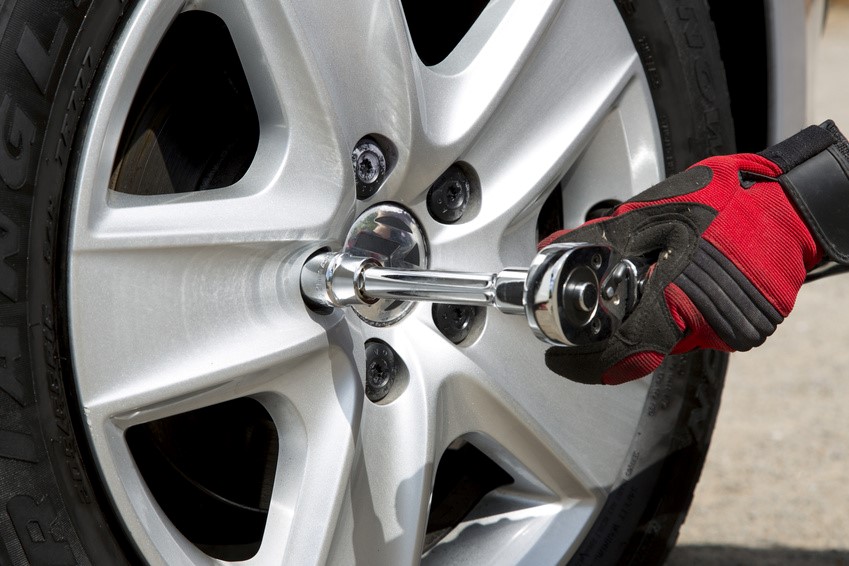
To avoid over-tightening your wheel nuts, it is important to follow the manufacturer’s specifications for torque carefully.
Additionally, it is a good idea to periodically check the torque on your wheel nuts, especially if you are driving in conditions that can lead to increased vibration or stress.
Torquing new wheels is important as the wheels adjust to the car.
The general rule is to torque your new wheels after the first 50 miles or 100 miles.
If you drive in adverse conditions, such as on dirt roads or in heavy rain, it is a good idea to check the torque more frequently.
Overtightening leads to stretching the wheel studs. These are the metal posts or bolts the wheel is attached to.
Due to this stress, the stud may potentially break. This breakage may lead to tire damage. Also, it could strip the bolts. There is even the potential that the brake rotors could warp.
Brake rotors may be affected by too much torque. The shaking caused by the vehicle potentially damages the entire brake system.
In addition, the vibration caused by an over-tightened wheel could even damage other parts of the car or loosen it up.
This can impact how effectively your vehicle is able to brake and steer, putting you at risk of accidents on the road. It is therefore important to make sure that your wheels are properly torqued to avoid these risks.
If a car has too little torque, it can impact its performance on the road. It will affect the balance and performance of the wheels.
They may wobble, which causes issues for the entire car.
The vehicle may not be able to accelerate or brake effectively, which can lead to collisions or other accidents.
Additionally, car parts such as the wheels and brakes may become damaged over time due to lack of proper torque, potentially increasing repair costs.
It is not recommended to use an impact wrench to fasten your car’s wheel nuts. This can damage the threads on the nuts or strip them completely.
It is best to use a torque wrench or a torque stick when tightening wheel nuts, as this will help you achieve the correct amount of torque.
There is no set frequency for checking the wheel nut torque, as it will depend on a number of factors, including how often you drive and what type of road conditions you typically encounter.
Some experts recommend checking the torque at least once a year, or any time that you change your tires or perform other routine maintenance on your vehicle.
If you notice any signs of damage to your wheels or wheels nuts, such as excessive wear or vibration when driving, it is important to bring your car in for an inspection right away.
With regular care and attention, you can help ensure optimal performance from your vehicle while also keeping yourself safe on the road.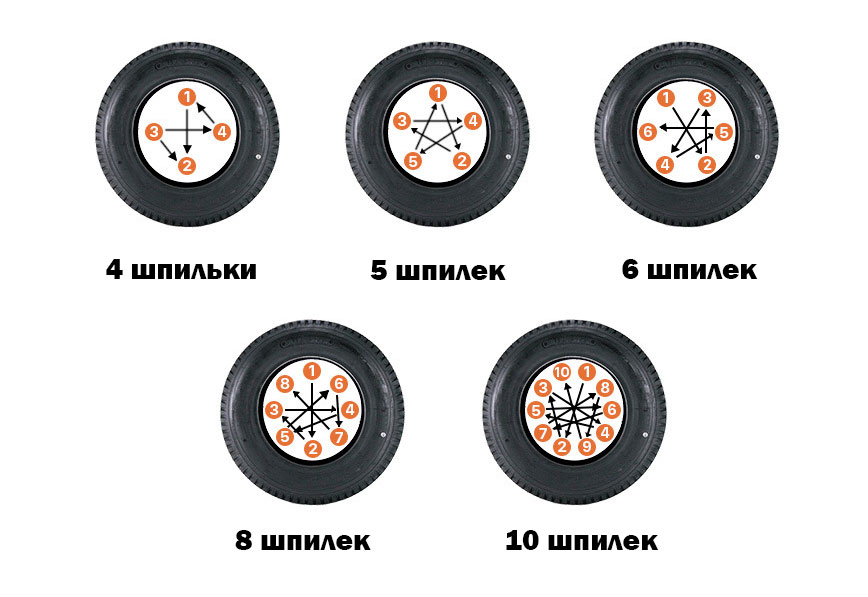
Yes, mechanics should always check the wheel nut torque when servicing a vehicle.
This is because the correct amount of torque is necessary for the wheels to function properly and safely.
If the nuts are not correctly torqued, it could lead to problems such as difficulty steering, increased wear and tear on the tires, and decreased performance overall.
In some cases, it may even be dangerous to drive with improperly tightened wheel nuts.
There are a number of different tools that mechanics can use to test the torque of a car’s wheel nuts. These might include specialized wrenches or digital torque gauges, which are connected either directly to the nuts themselves or to the car’s computer system.
The exact method used will depend on the type of wheels and other parts that your vehicle has, as well as its make and model.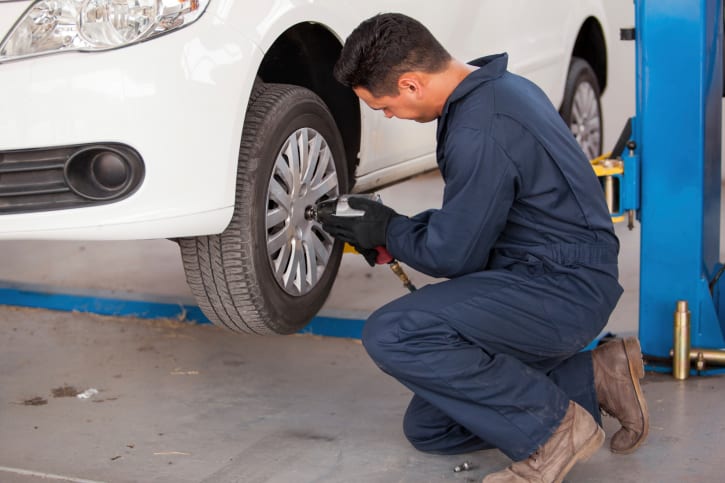
However, most mechanics will start by loosening each nut just slightly and then testing it with a torque wrench or gauge to determine what setting is required. Adjustments may need to be made several times before an accurate reading can be obtained.
Once this has been done successfully, the mechanic will then tighten each nut back up again according to the specified torque.
It is important to note that not all mechanics will have the same equipment or experience when it comes to testing wheel nut torque.
The right torque is important because it helps your car’s wheels to function optimally. It ensures that the wheels are properly attached to your car, allowing you to safely accelerate, steer, and brake.
It affects things like steering, handling, and braking, and can even affect the safety of your vehicle.
Without the right amount of torque, your car’s tires may not perform properly or could even become damaged.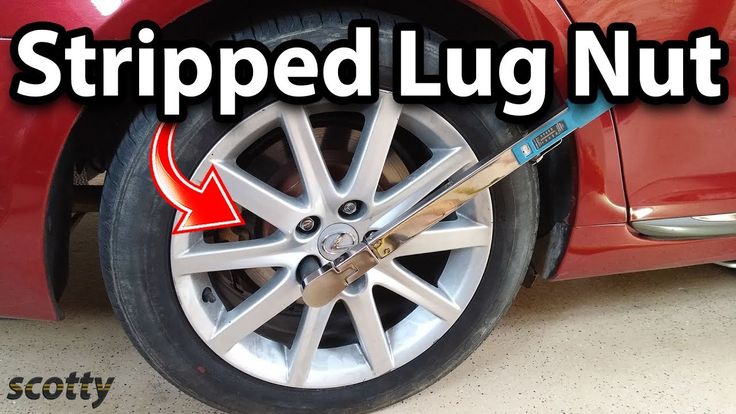
For this reason, it is essential to make sure that your wheel nuts are fastened to the correct torque settings at all times.
Without the right amount of wheel torque, your car may not perform as well or be as safe on the road.
https://itstillruns.com/proper-torque-wheel-nuts-7356894.html
https://www.tirerack.com/tires/tiretech/techpage.jsp?techid=107
Was this article helpful?
Great!
Click to share...
Did you find wrong information or was something missing?
We would love to hear your thoughts! (PS: We read ALL feedback)
Name (not required)
Email (not required)
Message
Posted by Benjamin Jerew Know How
To rotate tires or change a flat tire, you need to know how to tighten lug nuts, but “tight enough” isn’t enough. While many people get away with using a spider wrench, breaker bar or impact gun (which could be disastrous), the best way to tighten lug nuts is with a torque wrench. Here’s how to tighten lug nuts the right way.
While many people get away with using a spider wrench, breaker bar or impact gun (which could be disastrous), the best way to tighten lug nuts is with a torque wrench. Here’s how to tighten lug nuts the right way.
Wheel studs and lug nuts clamp the wheel, brake rotor and wheel hub together, which transmits braking torque to the wheel on deceleration and drives torque from the engine and transmission. Automotive engineers design wheel studs and lug nuts to achieve a specific clamping force or bolt tension.
Professional and DIY mechanics can’t measure clamping force or bolt tension. Instead, they use torque, a measurement of twisting force, to determine the correct clamping force. When torque is applied to the lug nut, it’s converted to linear force, which stretches the wheel stud and clamps everything together.
For example, a lug nut torque might be 76 foot-pounds, which is 76 pounds of force applied to a one-foot-long lever. Using a torque wrench that’s 3 feet long, you can use only one-third the force, or 25. 3 pounds, to have 75 foot-pounds of torque. Newton-meters, kilogram-meters and inch-pounds are other common torque units. Because the torque wrench is set to click, beep or vibrate at a specific torque value, the same torque can be applied to all the lug nuts, resulting in even clamping force.
3 pounds, to have 75 foot-pounds of torque. Newton-meters, kilogram-meters and inch-pounds are other common torque units. Because the torque wrench is set to click, beep or vibrate at a specific torque value, the same torque can be applied to all the lug nuts, resulting in even clamping force.
Tightening lug nuts the wrong way can cause problems, some of which may not be immediately noticeable:
After setting the torque wrench to the specification in the owner’s manual or repair manual, there are three steps to tighten lug nuts properly:
 Corrosion, thread damage and oil or grease can skew torque application and affect clamping force.
Corrosion, thread damage and oil or grease can skew torque application and affect clamping force.Knowing how to tighten lug nuts properly is critical. Keeping your wheels on helps you and others on the road to stay safe, and setting proper torque prevents damage to the wheel, hubcaps and disc brakes.
Check out all the hand tools available on NAPA Online or trust one of our 17,000 NAPA AutoCare locations for routine maintenance and repairs. For more information on lug nuts, chat with a knowledgeable expert at your local NAPA AUTO PARTS store.
Photos courtesy of Benjamin Jerew.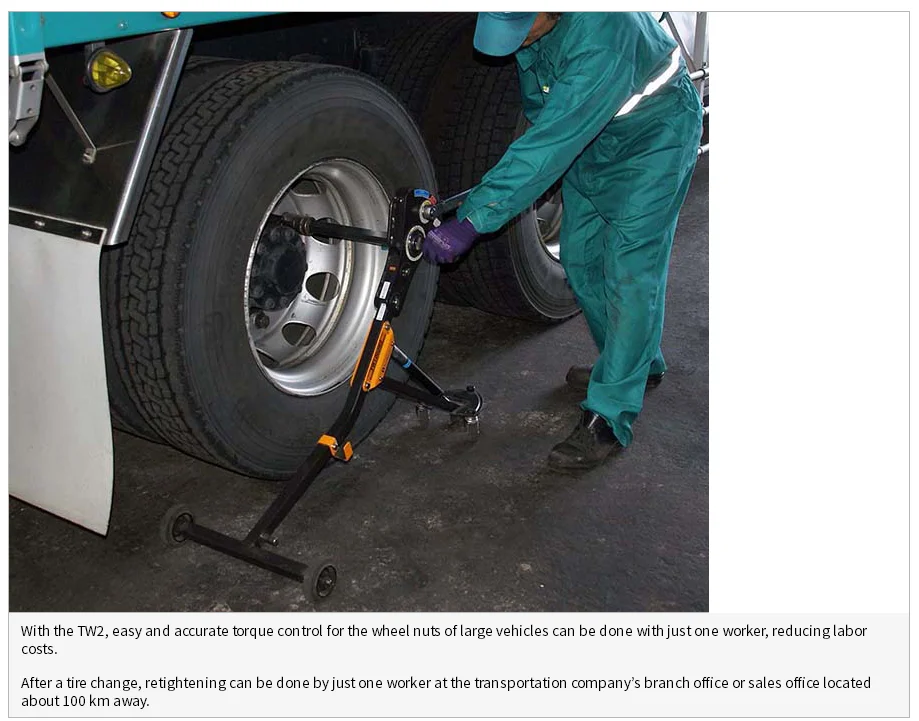
Categories
Know How
Tags
fasteners, hardware, lug nut, lug nut remover, studs, tire rotation, wheel stud, wheels
Ben has been taking things apart since he was 5, and putting them back together again since he was 8. After dabbling in DIY repairs at home and on the farm, he found his calling in the CGCC Automobile Repair program. After he held his ASE CMAT for 10 years, Ben decided he needed a change. Now, he writes on automotive topics across the web and around the world, including new automotive technology, transportation legislation, emissions, fuel economy and auto repair.
Unscrewing and tightening nuts is the main and easiest operation in a tire shop. Today, tire fitting masters have at their disposal a wide range of the most diverse technical equipment and tools to perform this unpretentious operation. For simple unscrewing and tightening of nuts and bolts, special wrenches are used, and to control the moment of tightening or loosening nuts and bolts, special torque wrenches are used. Sometimes it is necessary to use special torque amplifiers to loosen tightly tightened nuts, and special plastic indicators to control the possible loosening of nuts during driving.
Sometimes it is necessary to use special torque amplifiers to loosen tightly tightened nuts, and special plastic indicators to control the possible loosening of nuts during driving.
The topic of loose nuts and wheels flying off while driving is often discussed in the automotive community. If this happens, the owners or officials of trucking companies begin to look for both the reasons for the loose nuts and the means to prevent similar occurrences in the future. In some cases, they have to simultaneously solve the inverse problem - the inability to unscrew the heavily tightened wheel nuts. It often happens that the driver wants to replace a punctured tire on the road with a spare tire, but cannot unscrew the nut with the available wrench. He is forced to call a special help service, which, especially abroad, is not a cheap thing. Therefore, the focus is on finding and monitoring the optimum wheel nut torque values, and on drivers checking the wheel nut tightening status after a certain distance has been traveled since the last tightening.
This is especially true for trucks, so the manipulations described below and the details of their implementation will be more related to trucks.
Repair of wheels always starts with unscrewing the nuts. The range of nutrunners is quite large: pneumatic, electric, on a transport trolley or manual.
Electric wrenches are always built on a transport trolley, which greatly simplifies the work of the personnel, since they do not have to carry extra weight from wheel to wheel. Pneumatic, if necessary, can be mounted on a trolley, but in practice they are usually used manually. The staff of tire repair shops says that in this way the necessary manipulations are carried out faster, although the master is forced to carry them out in a half-bent state.
Truck wheel nut wrenches with an extended one-inch shaft, weighing approximately eleven kilograms. The designers of pneumatic tool manufacturing companies thought about this flaw and soon designed lightweight models that, although they do not weigh a full eight kilograms, make it possible to obtain a tightening torque (torque) with a force of 2100 Nm.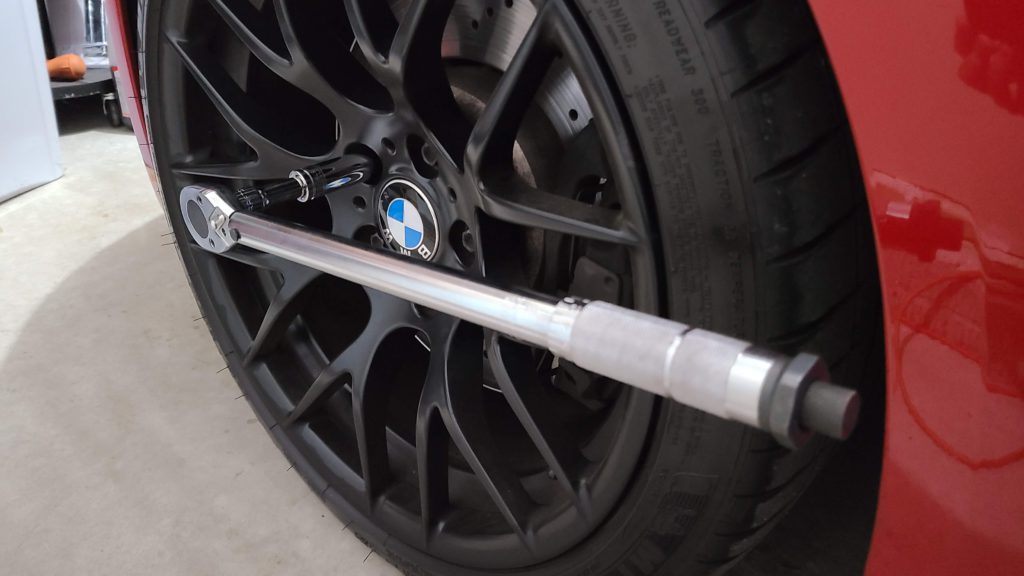 The amount of torque is especially important when the nuts are too tight. In electric impact wrenches equipped with a flywheel impact mechanism, in general, there is no problem with loosening tight nuts.
The amount of torque is especially important when the nuts are too tight. In electric impact wrenches equipped with a flywheel impact mechanism, in general, there is no problem with loosening tight nuts.
On the other hand, when using pneumatic nutrunners, in which the amount of compressed air supplied is sometimes limited, trying to loosen tight nuts the first time may not always be successful. In such cases, to tear off tightly tightened nuts, special torque amplifiers will come to the rescue, which work on the principle of increasing power through a system of gears and a toothed rim. On the market, for example, there is even an amplifier with a gear ratio of 68:1.
It can be used not only in stationary workshops, but also in mobile ones, or used by vehicle drivers when changing a wheel on the road. Loosening and unscrewing the nuts is carried out around the circumference of the wheel. Unscrewed nuts are recommended to be stored in a pre-prepared box or in any other clean container to prevent contamination of the internal threads of the nuts.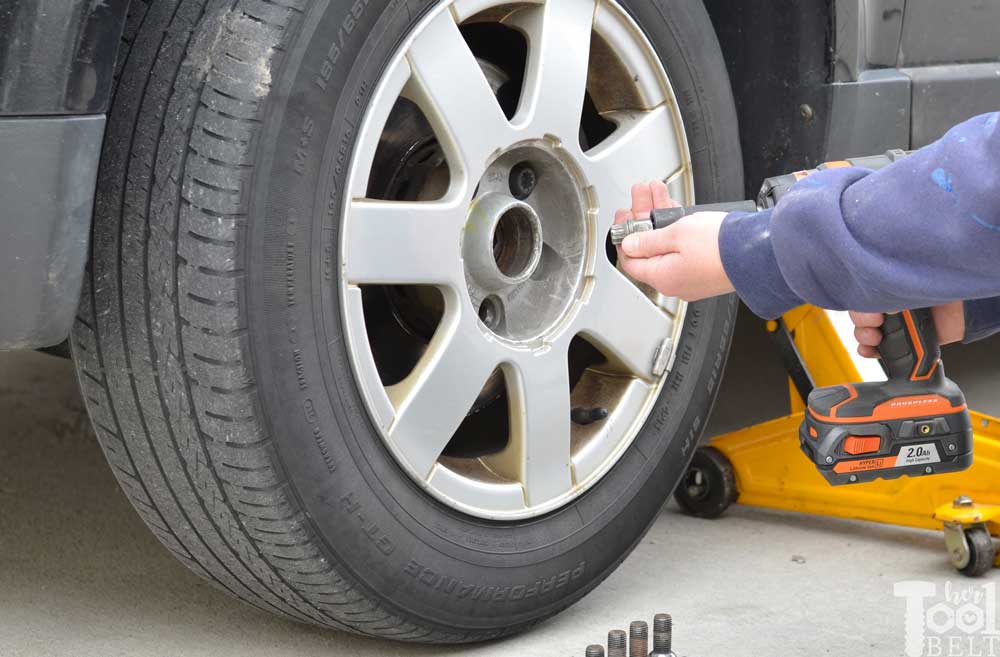 After unscrewing all the nuts, the wheel is freely removed from the vehicle hub.
After unscrewing all the nuts, the wheel is freely removed from the vehicle hub.
In most modern cars, the discs are centered on the hub through a central hole with a minimum clearance of tenths of a millimeter. This method of fastening the discs is referred to as type M mounting. Rust can form in the minimum gap between the disc and the hub, causing the disc to stick to the hub. Therefore, a hammer weighing several kilograms is already needed here. Hammer blows should be applied to the sidewall of the tire, never to the rim of the rim. If the hammer does not help, you need to look for other methods (driving and turning on wheels with manually tightened nuts, hitting an obstacle). Such solutions are quite effective, but at the same time dangerous, since the bolts can be damaged and will need to be changed.
The professional solution is to use hydraulic pullers, which are divided into two types. The first type is fixed between the wheels on the same axle, and the second type is placed between the wheel and the vehicle frame. In both types, it is recommended to apply pressure in several places around the circumference in order to gradually loosen rusted connections. The advantage of the hydraulic puller is that at a pressure of 500 bar it develops a force of up to 10 tons.
In both types, it is recommended to apply pressure in several places around the circumference in order to gradually loosen rusted connections. The advantage of the hydraulic puller is that at a pressure of 500 bar it develops a force of up to 10 tons.
Once the disk on the hub has been sufficiently loosened, the wheel must be removed from the vehicle. In order not to expend too much effort for this and not to damage the threads, the wheel should be removed using a handling trolley.
If the threads are damaged or dirty, the tightening torque may be distorted during subsequent tightening. This may create conditions for incorrect tightening. Therefore nuts and bolts should always be stored in a clean container. A convenient solution is a magnetic bowl that attaches directly to the lift bar. Bolts (studs), which are an integral part of the hub, must be cleaned mechanically with a wire brush or a special nozzle on a drill. Along with cleaning the threads of the bolts (studs), mechanical cleaning of the contact surface of the disk on the hub is also recommended. After that, the contact surface should be treated with a separating agent. The most commonly used copper paste or spray. It is recommended to apply a thin coat of lubricant to cleaned bolts (studs), which should help eliminate the aforementioned problems with tightening nuts. After processing the bolts (studs) and contact surfaces, the wheel is mounted on the bolts (studs) of the hub.
After that, the contact surface should be treated with a separating agent. The most commonly used copper paste or spray. It is recommended to apply a thin coat of lubricant to cleaned bolts (studs), which should help eliminate the aforementioned problems with tightening nuts. After processing the bolts (studs) and contact surfaces, the wheel is mounted on the bolts (studs) of the hub.
Lightweight wheels can be lifted and placed on the vehicle axle by hand or with a mounting lever. Heavier wheels should be lifted and installed using various lifting mechanisms. A simple lifting mechanism is a lever-operated handcart that can be combined with stud caps to protect their threads.
These tips respond to possible loosening of the nuts, which can cause subsequent wheel wobble on the vehicle axle. Another lifting mechanism is a four-wheeled trolley with a pneumatic or hydraulic lift installed on it. Such a trolley lifts the wheel exactly to the height of the bolts (studs) and puts it on them without damaging their threads. The use of such carts greatly facilitates the hard work of a tire repairman.
The use of such carts greatly facilitates the hard work of a tire repairman.
It is very important to tighten the nuts correctly. While the loosening of the nuts is carried out in a circle, their tightening is carried out with an "asterisk", that is, crosswise in the indicated sequence. This method of tightening the nuts ensures even distribution of the disc pressure over the contact surface of the hub. In the case of tightening around the circumference, there is a great risk that part of the disk will be pressed much more strongly in one place than in the opposite side.
During wheel operation, various vibrations can loosen the wheel nuts. After tightening the nuts, check with a torque wrench. The wrenches are selected according to the torque range as well as the available bits. The most commonly used wrench with a one-inch square. For trucks, the amount of torque increases with the increase in thread. For example, for DAF vehicles for thread M22x1.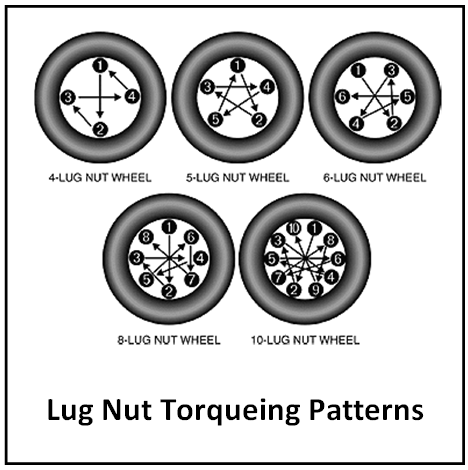 5, the tightening torque is 700 Nm (see table below). It is important that before checking the tightening with a torque wrench, the tightening with a wrench itself is an order of magnitude lower than the values \u200b\u200bgiven in the table.
5, the tightening torque is 700 Nm (see table below). It is important that before checking the tightening with a torque wrench, the tightening with a wrench itself is an order of magnitude lower than the values \u200b\u200bgiven in the table.
In truck tire service training, it is always stressed that the torque wrench must be moved in the direction it clicks. Only then can the tire fitter be sure that the wheels are securely tightened. But there is another side of the coin here - the nut is too tight, and next time it will be problematic to unscrew it. The tightening workflow for a passenger car is similar. The difference is only in the tightening torques. The tightening torque range here is 80–150 Nm. The only exceptions are wheels with a central nut, in which the tightening torque is - 600 Nm.
Checking the compliance of the nuts with the values given in the table using a torque wrench is not the final step. After overcoming fifty kilometers, it is recommended to re-check the tightness of the nuts on the wheels.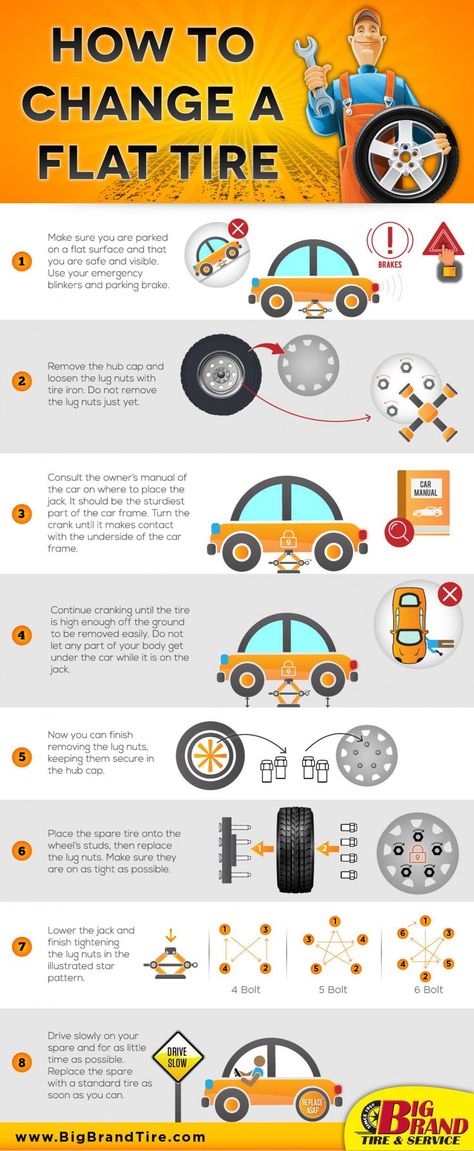 This means that the driver must take a special wheel wrench and use it to check the tightness of all nuts on all wheels.
This means that the driver must take a special wheel wrench and use it to check the tightness of all nuts on all wheels.
Particular attention should be paid to twin wheels. Such wheels are more susceptible to subsequent loosening of nuts due to operational vibrations. The so-called loosening indicators can also be used to control the loosening of nuts. These are plastic bushings with arrows that are put on the nuts. The arrows are placed one opposite the other, and if the nut is loosened, they will begin to diverge. On the nuts of the twin wheels of trucks, as well as on trailers, indicators called Checkpoint are used. On the front wheels of tractors with a protective ring, indicators called Dustite LR are used.
The plastic indicator kit also contains a clip called Checklink. They work on the principle of two plastic clips connected to each other in such a way that they prevent the nut from completely loosening. The clamps come with two metal dowels that are riveted onto two adjacent nuts.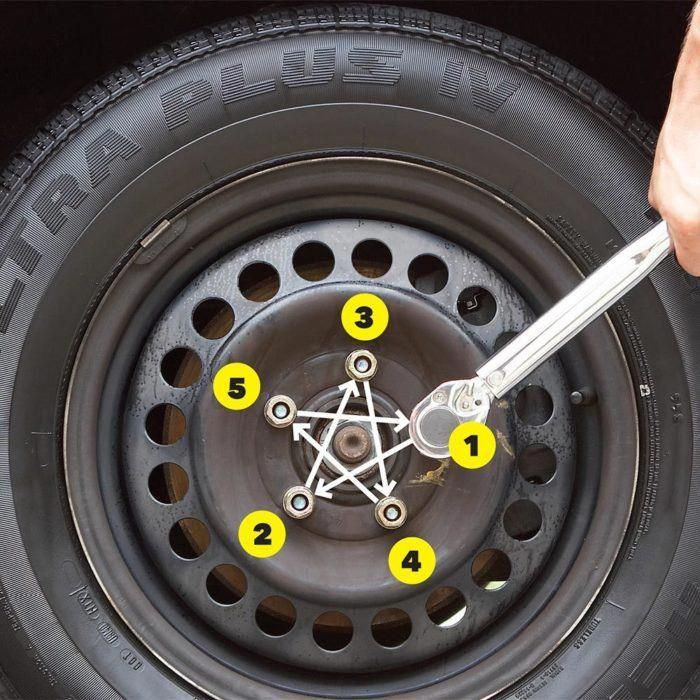 Metal dowels are used once, all plastic components can be reused. However, it is necessary to focus on the fact that neither indicators nor clamps release drivers of vehicles from personal control of the condition of the wheel nuts and their tightening.
Metal dowels are used once, all plastic components can be reused. However, it is necessary to focus on the fact that neither indicators nor clamps release drivers of vehicles from personal control of the condition of the wheel nuts and their tightening.
When using materials from our website, a hyperlink to tire.com.ua is required.
Failure of threaded connections due to overtightening can occur due to the destruction of the bolt shaft or due to the stripping of the threads of the nut and/or bolt.
A bolt or screw assembly with a nut of the appropriate class is designed to create connections that can be tightened to the specified proof load of the bolt without stripping the threads. Proof load is usually 85-95% of the yield strength and is defined as the maximum tensile force that can be applied to the bolt and which will not lead to its plastic deformation.
The torque value for a particular bolt size depends on:
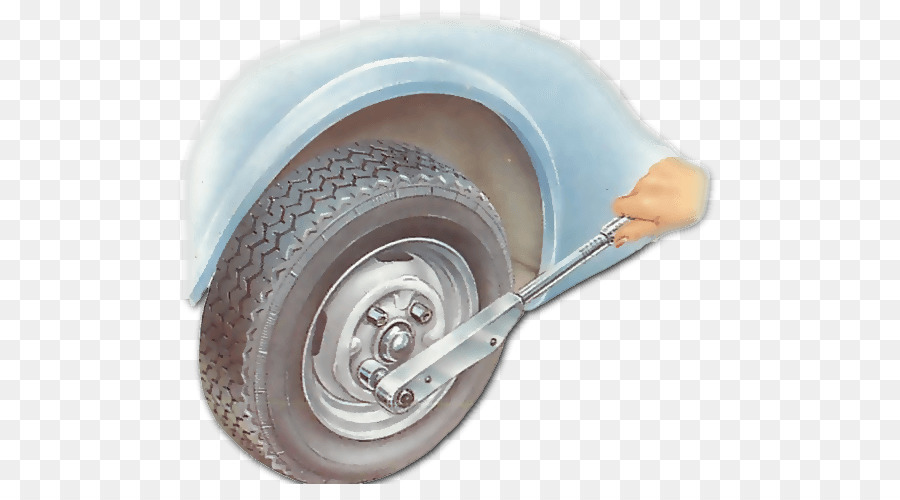
The tables below are for guidance only, as the values given are approximate. Due to the many factors that go into the torque-to-tension relationship, the only way to determine the correct torque is to experiment under actual joint and assembly conditions.
| Thread diameter | Strength class | |||||||
|---|---|---|---|---|---|---|---|---|
| 5.6 | 8.8 | 10.9 | 12.9 | |||||
| Nm | ft lb. | Nm | ft lb. | Nm | ft lb. | Nm | ft lb. | |
| M3 | 0.6 | 0.44 | 1.37 | 1.01 | 1.92 | 1.42 | 2.3 | 1.7 |
| M4 | 1.37 | 1.01 | 3.1 | 2.29 | 4.4 | 3.05 | 5.25 | 3.87 |
| M5 | 2.7 | 1.99 | 6.15 | 4.54 | 8.65 | 6.38 | 10.4 | 7.6 |
| M6 | 4.6 | 3.3 | 10.5 | 7.7 | fifteen | eleven | eighteen | 13 |
| M7 | 7.6 | 5.6 | 17.5 | 12.9 | 25 | 18.4 | 29 | 21. 3 3 |
| M8 | eleven | 8.1 | 26 | 19 | 36 | 26 | 43 | 31 |
| M10 | 22 | 16 | 51 | 37 | 72 | 53 | 87 | 64 |
| M12 | 39 | 28 | 89 | 65 | 125 | 92 | 150 | 110 |
| M14 | 62 | 45 | 141 | 103 | 198 | 146 | 240 | 117 |
| M16 | 95 | 70 | 215 | 158 | 305 | 224 | 365 | 269 |
| M18 | 130 | 95 | 295 | 217 | 420 | 309 | 500 | 368 |
| M20 | 184 | 135 | 420 | 309 | 590 | 435 | 710 | 523 |
| M22 | 250 | 184 | 570 | 420 | 800 | 590 | 960 | 708 |
| M24 | 315 | 232 | 725 | 534 | 1020 | 752 | 1220 | 899 |
| M27 | 470 | 346 | 1070 | 789 | 1510 | 1113 | 1810 | 1334 |
| M30 | 635 | 468 | 1450 | 1069 | 2050 | 1511 | 2450 | 1806 |
| M33 | 865 | 637 | 1970 | 1452 | 2770 | 2042 | 3330 | 2455 |
| M36 | 1111 | 819 | 2530 | 1865 | 3560 | 2625 | 4280 | 3156 |
| M39 | 1440 | 1062 | 3290 | 2426 | 4620 | 3407 | 5550 | 7093 |
| Thread diameter | Strength class | |||||
|---|---|---|---|---|---|---|
8. 8 8 | 10.9 | 12.9 | ||||
| Nm | ft lb. | Nm | ft lb. | Nm | ft lb. | |
| M8x1 | 27 | 19 | 38 | 28 | 45 | 33 |
| M10x1.25 | 52 | 38 | 73 | 53 | 88 | 64 |
| M12x1.25 | 95 | 70 | 135 | 99 | 160 | 118 |
| M14x1.5 | 150 | 110 | 210 | 154 | 250 | 184 |
| M16x1.5 | 225 | 165 | 315 | 232 | 380 | 280 |
| M18x1.5 | 325 | 239 | 460 | 339 | 550 | 405 |
M20x1.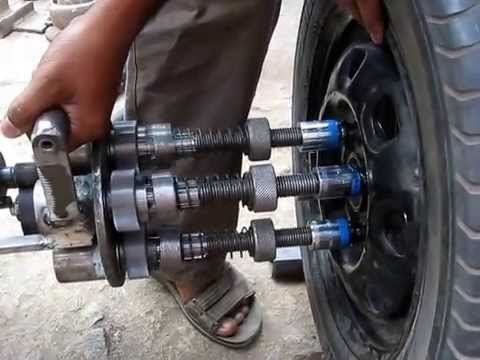 5 5 | 460 | 339 | 640 | 472 | 770 | 567 |
| M22x1.5 | 610 | 449 | 860 | 634 | 1050 | 774 |
| М24х2 | 780 | 575 | 1100 | 811 | 1300 | 958 |
| Thread diameter | Strength class | |||||||
|---|---|---|---|---|---|---|---|---|
| 5.6 | 8.8 | 10.9 | 12.9 | |||||
| Nm | ft lb. | Nm | ft lb. | Nm | ft lb. | Nm | ft lb. | |
| M3 | 0.56 | 0.41 | 1.28 | 0.94 | 1.8 | 1.33 | 2.15 | 1.59 |
| M4 | 1.28 | 0.94 | 2.9 | 2.14 | 4.1 | 3.02 | 4.95 | 3.65 |
| M5 | 2.5 | 1.84 | 5.75 | 4.24 | 8.1 | 5.97 | 9.7 | 7.15 |
| M6 | 4.3 | 3.1 | 9.9 | 7.3 | fourteen | 10.3 | 16.5 | 12.1 |
| M7 | 7.7 | 5.2 | 16.5 | 12.1 | 23 | 16.9 | 27 | 19.9 |
| M8 | 10.5 | 7.7 | 24 | 17.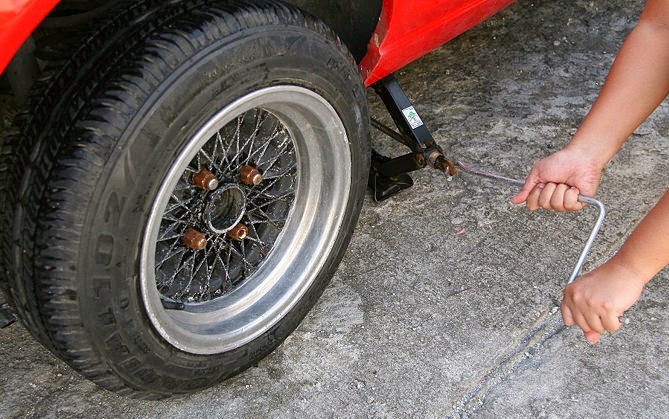 7 7 | 34 | 25 | 40 | 29 |
| M10 | 21 | fifteen | 48 | 35 | 67 | 49 | 81 | 59 |
| M12 | 36 | 26 | 83 | 61 | 117 | 86.2 | 140 | 103 |
| M14 | 58 | 42 | 132 | 97 | 185 | 136 | 220 | 162 |
| M16 | 88 | 64 | 200 | 147 | 285 | 210 | 340 | 250 |
| M18 | 121 | 89 | 275 | 202 | 390 | 287 | 470 | 346 |
| M20 | 171 | 126 | 390 | 287 | 550 | 405 | 660 | 486 |
| M22 | 230 | 169 | 530 | 390 | 745 | 549 | 890 | 656 |
| M24 | 295 | 217 | 675 | 497 | 960 | 708 | 1140 | 840 |
| M27 | 435 | 320 | 995 | 733 | 1400 | 1032 | 1680 | 1239 |
| M30 | 590 | 435 | 1350 | 995 | 1900 | 1401 | 2280 | 1681 |
| M33 | 800 | 590 | 1830 | 1349 | 2580 | 1902 | 3090 | 2278 |
| M36 | 1030 | 759 | 2360 | 1740 | 3310 | 2441 | 3980 | 2935 |
| M39 | 1340 | 988 | 3050 | 2249 | 4290 | 3163 | 5150 | 3798 |
| Thread diameter | Strength class | |||||
|---|---|---|---|---|---|---|
8. 8 8 | 10.9 | 12.9 | ||||
| Nm | ft lb. | Nm | ft lb. | Nm | ft lb. | |
| M8x1 | 25 | eighteen | 35 | 25 | 42 | thirty |
| M10x1.25 | 49 | 36 | 68 | fifty | 82 | 60 |
| M12x1.25 | 88 | 64 | 125 | 92 | 150 | 110 |
| M14x1.5 | 140 | 103 | 195 | 143 | 235 | 173 |
| M16x1.5 | 210 | 154 | 295 | 217 | 350 | 258 |
| M18x1.5 | 305 | 224 | 425 | 313 | 510 | 376 |
M20x1.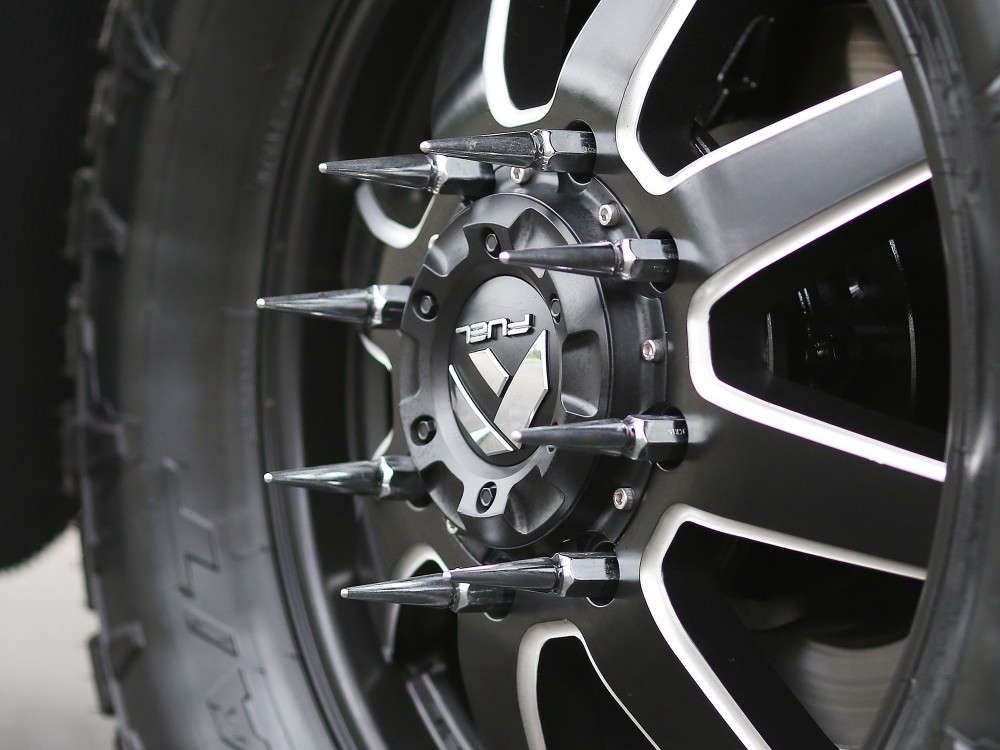 5 5 | 425 | 313 | 600 | 442 | 720 | 531 |
| M22x1.5 | 570 | 420 | 800 | 590 | 960 | 708 |
| М24х2 | 720 | 531 | 1000 | 737 | 1200 | 885 |
Even experienced craftsmen sometimes over-tighten or under-tighten bolts. To be honest, torque values are rarely found in technical product information. But it is precisely the insufficient or excessive tightening of the bolted connection that is a common cause of fastener failure. Optimum tightening torque is vital to ensure the safe and proper operation of the screw.
The torque applied to the nut causes it to slide up the inclined plane of the thread. This reduces the distance between the bearing surfaces of the bolt and nut. This dimension represents the grip length of the bolted connection.
This reduces the distance between the bearing surfaces of the bolt and nut. This dimension represents the grip length of the bolted connection.
With further tightening, a tensile load acts on the bolt. Its material, most commonly steel, resists this stretch and creates a clamping force on the components to be fastened. Similarly, backing materials resist compression to balance clamp pressure. The voltage created is called fastener preload .
Critical structural connections require tightening to a certain torque to ensure proper preload.
 The gap in the joint means that there is no pretension, which will inevitably lead to the destruction of the joint.
The gap in the joint means that there is no pretension, which will inevitably lead to the destruction of the joint. Thus, tightening torque is the optimal torque applied to the nut so that the bolt can securely hold the load without deforming or breaking. SI unit: Nm (Newton meter).
The pre-tightening torque of the threaded connection is a calculated value and is 75-80% of the test load value. The latter serves as a reference indicator, which the screw must withstand during the tests. If you exceed the proof load when tightening, you risk damaging the fastener.
At first glance at the bolt assembly, it seems that the threaded fastener itself bears all the loads acting from the outside during operation. But it's not. When an external load is applied to a preloaded joint, the bolt takes only part of its action, and usually only a small part of it. On the other hand, when a workload is applied to a fastener that has not been preloaded, the entire amount of load is applied to the bolt alone, increasing the likelihood of bolt failure.
But this rule only works if the additional external loads do not exceed the preload of the bolts, otherwise the load on the threaded fasteners increases.
To determine the tightening force, several special calculation methods are used, taking into account not only the strength class and screw thread diameter, but also the influence of galvanic coatings, special lubricants or the effect of hard and smooth mating surfaces, etc.
It should be borne in mind that the tabular data is a rough calculation that does not take into account how much torque will be lost due to friction in real assembly conditions.
With dry assembly and rough surfaces, approximately 90% of the applied torque is in friction: 50% at the nut seat and 40% between mating threads. Thus, only about 10% of the tightening force is used to create tension.
But a solution has been found! - Reduce friction through lubrication.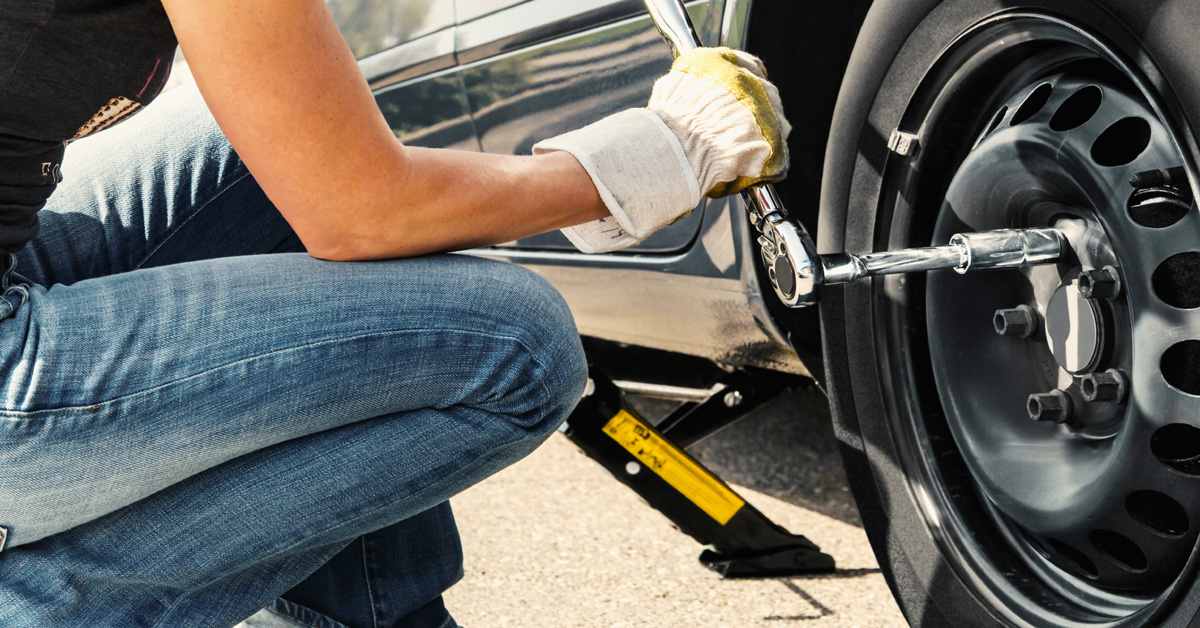 With lubricated threads, 15-25% less torque is required to achieve the same tension, and it also reduces the chance of the fastener breaking during installation and extending its life. Lubricant manufacturers typically list the coefficient of friction of the fastener that the lubricant provides.
With lubricated threads, 15-25% less torque is required to achieve the same tension, and it also reduces the chance of the fastener breaking during installation and extending its life. Lubricant manufacturers typically list the coefficient of friction of the fastener that the lubricant provides.
It is also possible to use bolts with a predetermined coefficient of friction, for example, with a zinc coating, which reduces the resistance when screwing.
Applying precise torque to fasteners is achieved with a torque wrench. When tightening, it displays the applied force in analog or digital format. However, all torque tools have a certain margin of error that must be taken into account in order to determine the correct tightening torque.
As a rule, the accuracy of a torque wrench can be obtained from the manufacturer or dealer.
Although preload is the top priority in bolting, there are many external factors that affect the ability to achieve or maintain torque, such as operating temperatures, corrosive environments, shear loads, and vibration.